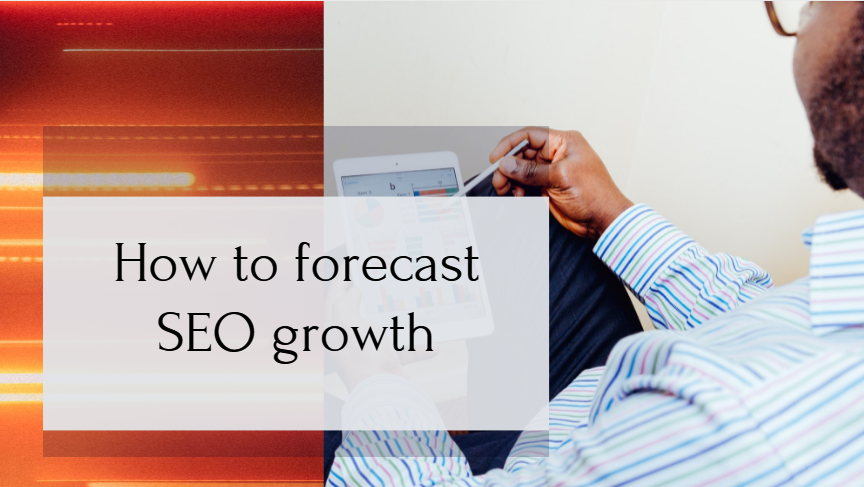How to forecast SEO growth
Is SEO an Exact Science? Like all sciences, it depends greatly on the observation tools available. In the era of artificial intelligence and machine learning, increasingly efficient programs are being developed, particularly in terms of information processing.
As such, after many SEO optimization tools have emerged, the SEO agency Uplix (in partnership with Oncrawl ) seems to have found the formula to go beyond its infancy.
The object of this progress?
A machine dedicated to Predictive SEO (predictive SEO), able to tell if a web page model will rank well or not, and why!
 |
| Predictive Ranking in SEO, fantasy or reality? |
How is it possible?
The following will show you that it is easier than it seems!
Duplex Lab IA: the future of Predictive SEO?
Do you know the failures?
Today, powerful AIs like Stockfish and AlphaZero help prepare for International Grand Masters, evaluating positions and advocating the best shots.
Well, it turns out that ULI (Uplix Lab IA) does exactly the same: taking into account the rules of the Google game, the strengths and weaknesses of the competitors, and the keywords of the target queries, the algorithm estimates your position in the SERPs with an accuracy of up to 92%.
Then, he suggests areas for improvement to rank better.
What is a Predictive SEO Machine?
Of course, the first task was to collect all the known ranking factors in order to train them in AI.
The experts at Uplix took care of it with their fingers in their noses. Then, thanks to the expertise of Oncrawl, the algorithm can benefit from a large database via crawling on the sites concerned.
Indeed, to know which pages are positioned well, it is necessary to know the qualities and weaknesses of the main competitors! Then the predictions are verified and should appear as SEO recommendations for the server owner.
ULI SEO recommendations: ranked in order of importance
This is where the Uplix tool works wonders: it is not only able to tell why a web page is better referenced than another but also to tell you in what proportions the modification suggestions will impact the ranking.
Indeed, most identifiable and measurable SEO factors generally relate to:
- the content (eg number of words).
- the performance (eg loading time).
- the popularity (ex: backlinks) of a site.
There are dozens of them, with a weight that differs depending on the request and the competition .
The work of ULI, therefore, tells you how to prioritize the features or "SEO criteria". The role of the server owner will then be simply to follow the recommendations of the algorithm.
As a result, if ULI believes that keywords in your H2s are more important than indexing speed, it will be up to the web editor to take action rather than the developer.
Uplix Lab IA: Really Reliable SEO Predictive?
Artificial intelligence exist to make good human intuitions gain precision. However, even with machine learning, ULI reports a minimum of 8% errors.
A flaw in the algorithm?
Not quite. Indeed, there are some unpredictable ranking factors, among which:
- the history of the Internet user (previous research guides future results in the SERPs);
- the behavior of the user (although this is not quite established, some experts suspect browsers like Chrome to observe user behavior during navigation so Google refines more results pages);
- the arrival of a competitor ;
- A manual penalty from Google ...
- etc.
So that's how we get an 8% margin of error.
How does the tool manage to estimate the importance of each feature?
It is formidably simple!
When the tool is given a certain number of features to check, it performs the following manipulation: it removes a ranking factor from its estimates and compares the level of error before and after.
The diagram below shows an example of the response time of the interface when the user interacts with it.
When ULI no longer takes this criterion into account, it records an error rate of around 20% instead of 8%. This 12-point difference is significant, which ranks response time as the first criterion of importance for natural referencing in this specific case. The guarantee of results is therefore devilishly mathematical!
What impact on the work of an SEO agency?
Given the countless number of sites that exist and that need adjustments (or even a redesign), a Predictive Ranking tool would make it possible to:
- provide easy-to-understand recommendations using a user-oriented dashboard ;
- prioritize changes with an action plan and therefore adjust the budget by focusing on the essentials;
- allow full optimization on a web page template even before it is published and indexed ;
- quickly boost the positioning of sites at strategic times for specific requests.
You may also like: best backlink dofollow.
Uplix Lab IA: it's for everyone and coming soon!
Duplex and Oncrawl are in the process of developing the beta version of their machine learning dedicated to Predictive Ranking.
Soon, any website owner, no matter their budget and industry, will be able to benefit from a fast and ultra-accurate audit.
Even taking into account the margin of error, it will be possible to identify the main problems of a site, or even to more easily assume the external factors which prevent a page from taking the lead in the SERPs on a specific request.
In short, it's a bit like going to the doctor, and he has a scanner available that can check your entire body, in order to diagnose all at once what may be preventing it from working. normally.
It remains to be seen when this innovation, which is still under construction, will be released!
How to Forecast Your SEO Potential
- SEO content optimizer.
- similar content SEO.
- similar content alternative.
- similar content checker.
- similar content review.
- content optimization tool.
Commentaires
Enregistrer un commentaire